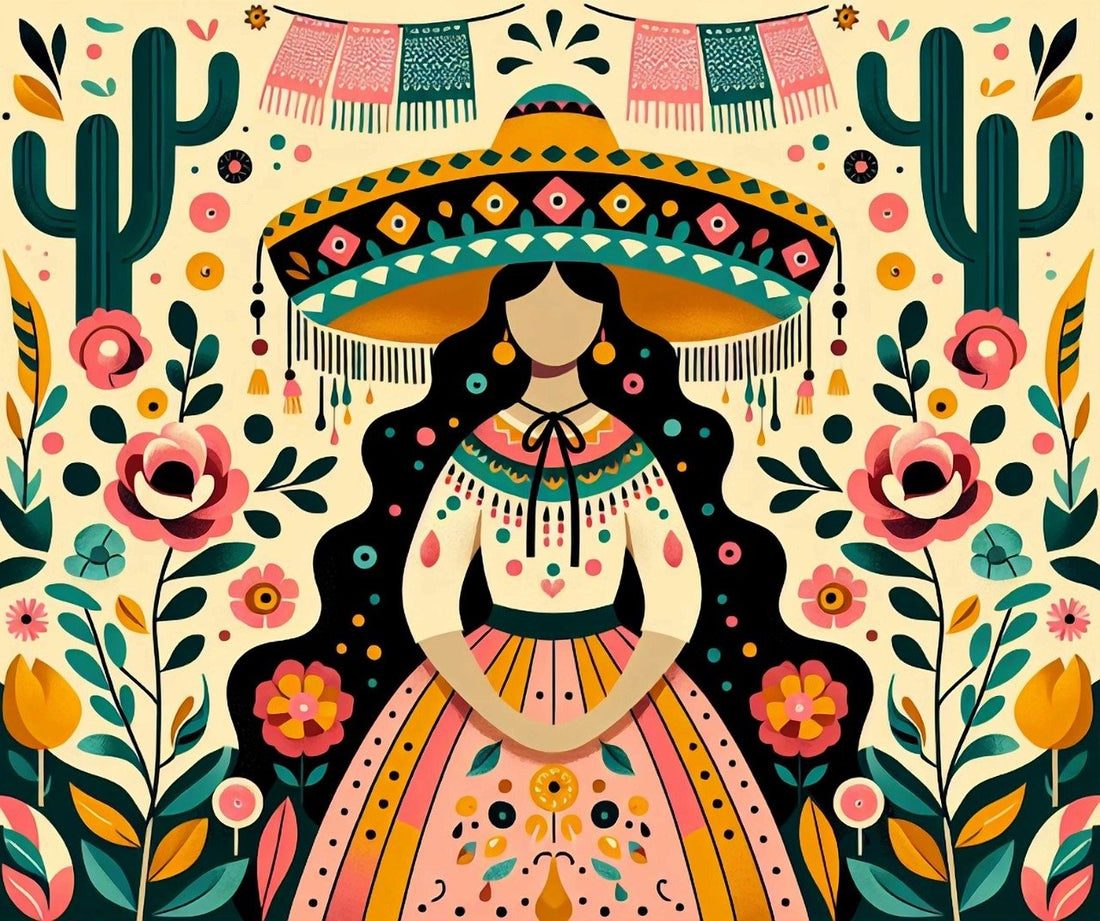In the heart of Central America lies El Salvador, a country brimming with culture, history, and natural beauty. Among its most captivating treasures is its folk art, a vibrant expression of its people’s creativity, resilience, and profound connection to their environment. Salvadoran folk art, with its colorful depictions and intricate details, serves not just as decoration but as a narrative of life—a mirror reflecting the spirit of the Salvadoran people.
The Origins of Salvadoran Folk Art
The roots of Salvadoran folk art trace back to pre-Columbian times, long before the Spanish conquest. Indigenous groups such as the Pipil, Lenca, and Maya developed artistic traditions that centered on nature, mythology, and daily life. These early art forms incorporated natural materials like clay, wood, and pigments derived from plants and minerals.
Over time, the influence of Spanish colonization blended with indigenous traditions, giving rise to unique hybrid styles. While the colonial period introduced new materials like metal and techniques such as embroidery, the core essence of Salvadoran folk art remained rooted in the land and its people.
A Symphony of Colors and Themes
Salvadoran folk art is instantly recognizable by its bold, vibrant colors and dynamic compositions. Artists often use hues that seem to echo the tropical landscapes of the country—lush greens of the forests, fiery reds of sunsets, and the deep blues of the Pacific Ocean. These vivid palettes are not just aesthetic choices; they evoke joy, resilience, and hope, offering a counterpoint to the country’s turbulent history.
Nature plays a central role in Salvadoran folk art. Birds, flowers, trees, and animals often appear as recurring motifs. These elements are more than decorative; they symbolize harmony, fertility, and the interconnectedness of life. For example, the national flower, izote, and the iconic Torogoz bird often find their way into paintings and crafts, representing national pride and ecological awareness.
Artistic Forms and Mediums
Stories and Symbolism
Salvadoran folk art is not just visually stunning; it is deeply narrative. Each piece tells a story, whether it’s about a community’s way of life, a historical event, or a personal experience. The themes often reflect the duality of life—its joys and struggles, its beauty and hardships. For example:
- Scenes of Rural Life: Many paintings and crafts celebrate the simplicity and beauty of rural life—farmers tending to crops, women weaving, children playing. These depictions are nostalgic yet rooted in reality, capturing the essence of Salvadoran culture.
- Religious Devotion: Faith plays a significant role in Salvadoran life, and this is reflected in folk art. Religious icons, crosses, and nativity scenes are common motifs, often infused with local elements that make them uniquely Salvadoran.
- Historical and Political Commentary: In recent decades, some folk artists have used their work to address social and political issues, from the scars of civil war to the struggles of migration. These pieces are not only works of art but also acts of resistance and calls for change.
The Role of Women in Salvadoran Folk Art
Women have been pivotal in the preservation and evolution of Salvadoran folk art. From textile weaving to pottery, women’s contributions often carry the weight of cultural memory. Through their art, they pass down traditions, stories, and skills to younger generations. In modern times, women artisans have also become key players in economic empowerment, using their craft to support their families and communities.
The Global Reach of Salvadoran Folk Art
Despite its humble origins, Salvadoran folk art has garnered international acclaim. Artists like Fernando Llort have exhibited their work worldwide, while organizations and cooperatives promote artisan crafts globally. Tourists visiting El Salvador often seek out local markets to purchase these one-of-a-kind pieces, which serve as both souvenirs and cultural artifacts.
However, this global recognition comes with challenges. The commercialization of folk art sometimes risks diluting its authenticity. Mass production and imitation threaten the livelihoods of genuine artisans. To combat this, many initiatives focus on fair trade and sustainable practices, ensuring that artisans receive fair compensation and that their traditions are respected.
Preserving a Cultural Legacy
In an age of rapid globalization, the preservation of Salvadoran folk art is more crucial than ever. Efforts are underway to protect and promote this cultural heritage. Art schools, workshops, and cooperatives play a vital role in passing down techniques and traditions to younger generations. Festivals and exhibitions celebrate the diversity and richness of Salvadoran folk art, fostering pride and awareness both locally and internationally.
Why Salvadoran Folk Art Matters
Salvadoran folk art is more than a visual delight; it is a testament to the resilience, creativity, and soul of its people. It bridges the past and present, blending indigenous traditions with modern influences. It speaks of a profound connection to nature, a deep sense of community, and an unyielding hope for the future.
In every vibrant painting, intricate textile, or meticulously crafted piece of pottery, one can see the heart of El Salvador—a small country with a big story to tell. Salvadoran folk art invites us to look beyond the surface, to understand and appreciate the culture and spirit of a people who find beauty and meaning in life’s simplest moments.
Whether you’re an art lover, a traveler, or simply someone seeking inspiration, Salvadoran folk art offers a glimpse into a world where creativity and tradition come together in perfect harmony. It reminds us that art is not just a form of expression but a celebration of life itself.
